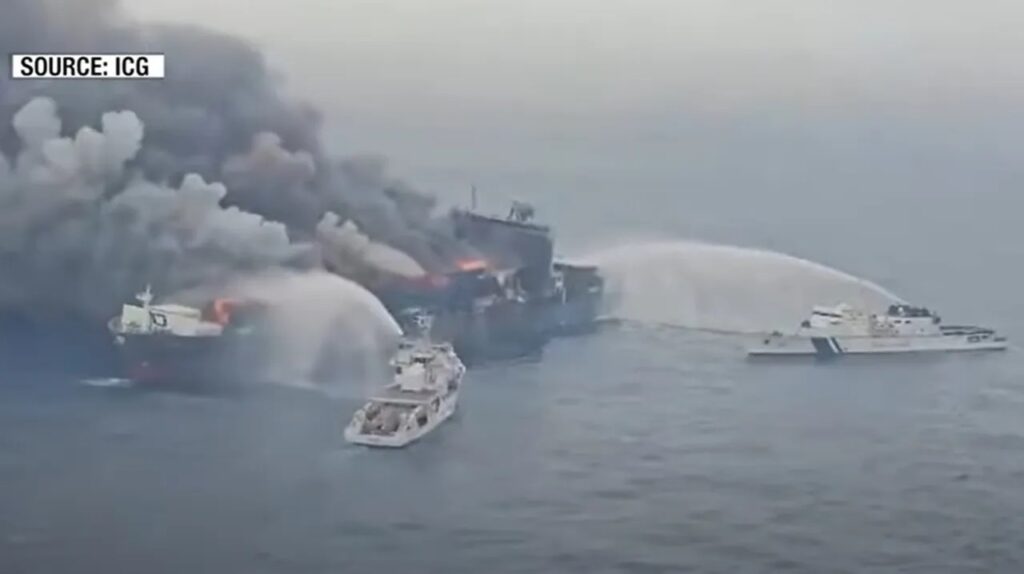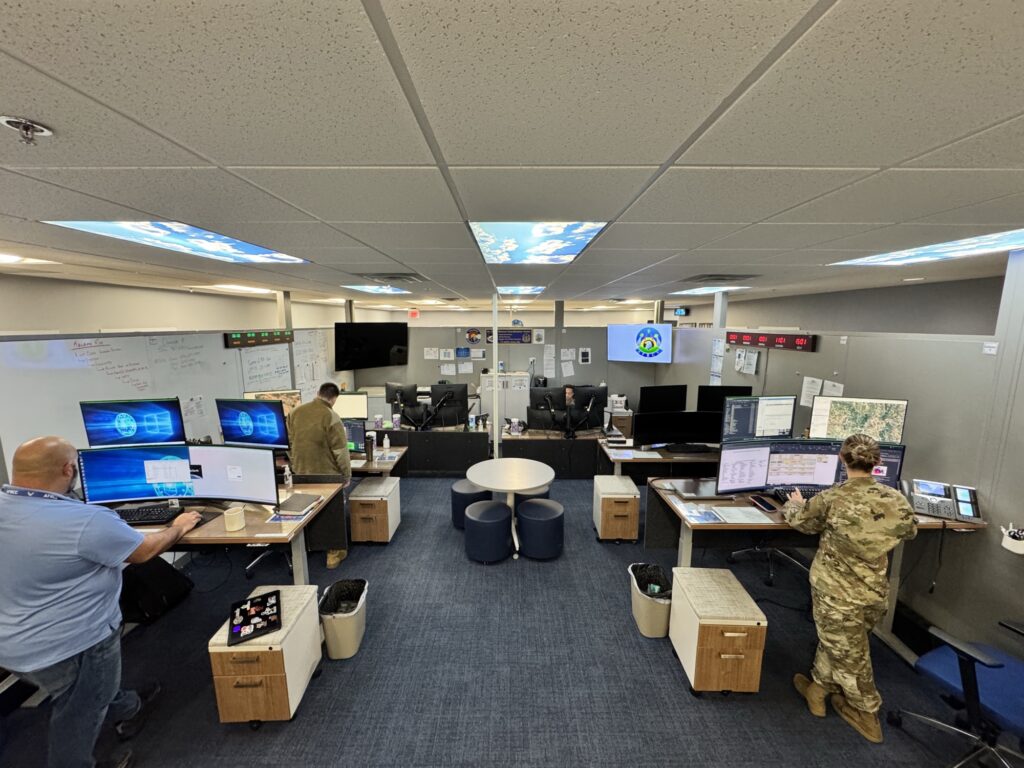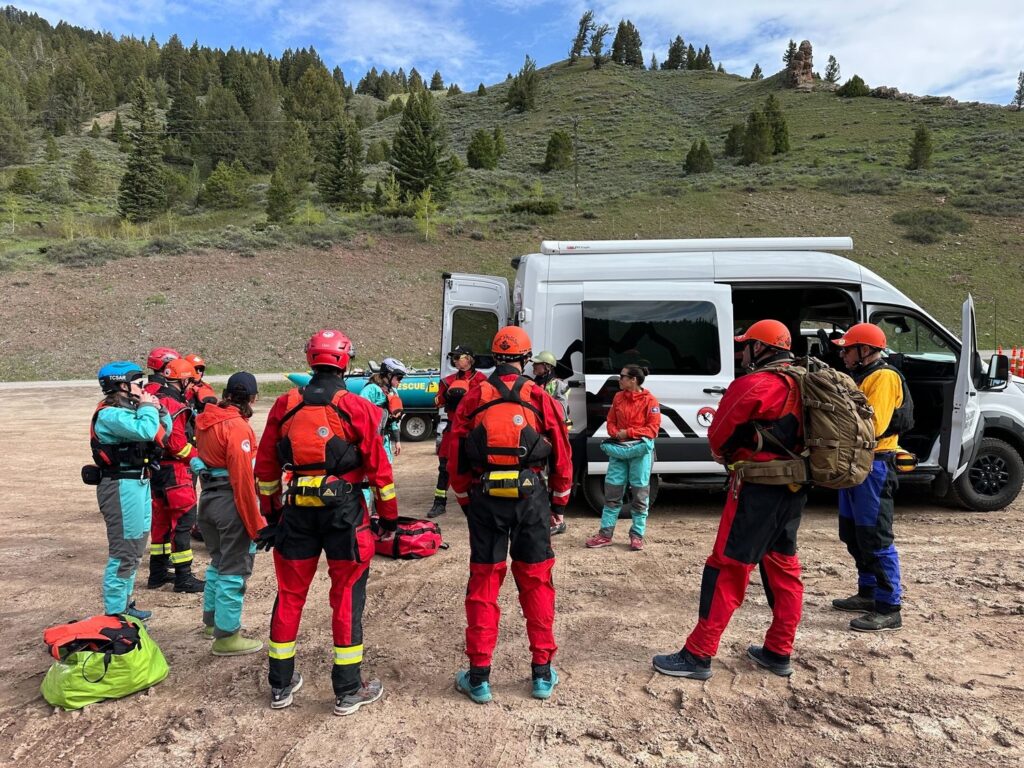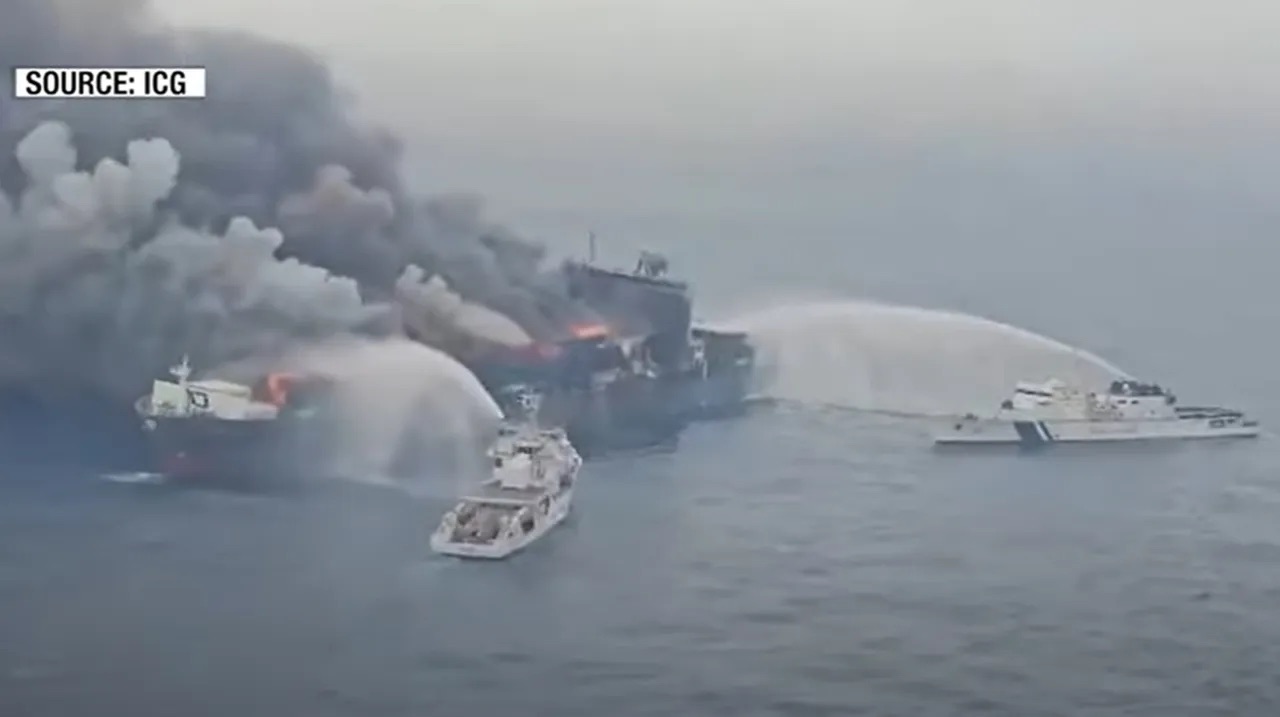Wow, this was a busy week in Search and Rescue, and Lord only knows it’s just a handful of what’s happening out there. Here’s the gist from across the globe summed up in emojis: 🔥🌊💧♒🆘⛵⛰️🤖#️⃣2️⃣0️⃣⬆️.

From a fire aboard the Wan Hai 503 off India’s Kerala coast—where four crew remain missing despite the rescue of 18 others—to the tragic loss of life and ongoing search for missing migrants near Djibouti after smugglers forced 150 people to swim to shore.
In the U.S., the California Air National Guard’s 129th Rescue Wing saved a Ukrainian sailor offshore, the AFRCC celebrated surpassing 20,000 lives saved, and Wyoming’s Carbon and Teton County teams executed swift rescues on land.
International efforts included successful multi-agency rescues in Trinidad and Tobago, while urban teams responded to flooding and fires in San Antonio.
Meanwhile, new EU-funded mini robots and augmented reality systems are advancing tech-assisted SAR, and policy developments like the Public Land Search and Rescue Act aim to bolster support for local operations (now with text!).

Singapore

This week, the Wan Hai 503 caught fire off India’s Kerala coast and forced crew members to abandon ship. The Maritime and Port Authority of Singapore confirmed that four crew members remain missing, including two Taiwanese, one Indonesian, and one Myanmar national, while 18 crew members were successfully rescued. Search and rescue operations involving the Indian Coast Guard and naval vessels continue, with aircraft support providing comprehensive coverage of the affected area.
Djibouti
This week, a major SAR case occurred off the Djibouti coast, prompting an international rescue response. Eight refugees and migrants died and 22 others remain missing after they were forced off a boat by smugglers near the Djibouti coast on June 5. The victims were among a group of 150 people who traffickers ordered to disembark and swim to shore. In collaboration with the Djibouti authorities, the International Organization for Migration (IOM) launched an active search-and-rescue mission to locate the missing individuals.
California
This week, the California Air National Guard’s 129th Rescue Wing successfully conducted an offshore rescue operation. A Ukrainian sailor was rescued by a pararescueman from the 129th Rescue Wing and transported to a local hospital after a medical emergency hundreds of miles offshore. The 40-year-old sailor aboard the Bahamian cargo ship Aetos had been ill for several days, prompting coordination between the 129th Rescue Wing, Coast Guard District 11, and multiple rescue units. The rescue marked the 129th Rescue Wing’s 1,167th save since its establishment in 1975.

AFRCC

I failed to mention this last week, but the Air Force Rescue Coordination Center (AFRCC) achieved a historic milestone this week, surpassing 20,000 lives saved during its operational history. The milestone was reached on May 28, 2025, during the rescue of two stranded hikers in Boise County, Idaho. AFRCC coordinated with the Idaho Joint Operations Center, dispatching an HH-60 Black Hawk helicopter from the 1-183rd Aviation Battalion, Idaho Army National Guard, to bring the hikers to safety. In 2024, AFRCC handled 13,794 incidents, launching 478 missions and saving 231 lives while resolving 96% of its cases through phone and online investigations.
Wyoming River (US)
This week, Carbon County Search and Rescue volunteers conducted a successful multi-person rescue operation on the North Platte River. On June 4th, dispatchers received distress calls reporting a capsized canoe north of Saratoga, with boaters clinging to a partially submerged log.
Search and rescue volunteers successfully retrieved all three boaters using a raft and then responded to a second incident involving two additional capsized boaters farther downstream. All five individuals were safely returned to their vehicles at the Hobo Hot Springs parking lot, and no injuries were reported.
Wyoming Mountain Rescue

Teton County Search & Rescue has experienced a hectic period, continuing their high activity levels from May into June. Since June 1, the team has been called five times, with additional requests from Grand Teton National Park for emergency helicopter assistance. Recent operations included a helicopter evacuation of a hiker experiencing a medical issue on Sheep Mountain on June 9, and an overnight search for a 19-year-old male who hadn’t returned from a hike up Moose Creek. The team also responded to reports of a crashed speed flyer on Snow King Mountain, though no injured patient was found after an extensive search.
Trinidad and Tobago
Trinidad and Tobago’s Hunters Search and Rescue Team conducted operations in Chaguaramas this week, working alongside Trinidad and Tobago Fire Service officers to rescue four hikers. The collaborative effort demonstrates the continued importance of multi-agency coordination in search and rescue operations.
Texas
Urban search and rescue teams have responded to various fire-related emergencies throughout the week. Firefighters conducted dramatic rescues during flash flooding in San Antonio, where torrential rains triggered widespread water emergencies requiring dozens of rescue operations across the city. Additional urban rescue operations included multiple building fire responses, with firefighters successfully extracting victims from third-floor locations during emergencies.

MSF and SAR in the Med 🚨
A few weeks ago, I wrote a piece on the issues surrounding SAR in the Central Mediterranean, a critical hotspot for maritime rescue operations, with multiple organizations conducting lifesaving missions throughout. This week, Médecins Sans Frontières (MSF), while continuing search and rescue activities in international waters between Libya, Malta, and Italy, also released a report titled, Deadly Manoeuvres: Obstruction and Violence in the Central Mediterranean. MSF emphasizes that removing search and rescue ships like the Geo Barents from the Central Mediterranean represents a devastating blow for those fleeing dangerous conditions. In short, it would appear Nationalism is overtaking Humanitarianism- but that could be a pundit’s take?
H.R. 3777: Public Land Search and Rescue Act (now, with text!) 📜
Last week, I noted that the Public Land Search and Rescue Act was introduced in the 119th Congress on June 6, without text. The text is now available to view. In short, it’s to give smaller areas federal assistance with maintaining a SAR presence. “The Federal share of the cost of an eligible purpose funded under the Program shall not exceed 75 percent of the total cost of the eligible purpose, as determined by the Secretary.”

Miniature Robot Technology 🤖
EU-funded researchers have developed robust mini robots with advanced sensors to help search and rescue teams find survivors in disaster zones. These robots, developed through the CURSOR project, include the Soft Miniaturised Underground Robotic Finder (SMURF) system equipped with video cameras, thermal cameras, microphones, speakers, and chemical sensors capable of detecting human presence. The SNIFFER sensor can distinguish between living and deceased individuals, providing reliable information even in challenging conditions with smoke or rain. Drone delivery systems transport these robots directly to dangerous or hard-to-access areas.
Augmented Reality, AI, and UAVs(Drones) Integration = 🔥
While this article is from 2024, it is an excellent view into how researchers tackle tech use in the SAR realm. This one concerns the development of VizCom-AR, an Augmented Reality system designed to facilitate visual communication between operators during UAV-driven search-and-rescue missions. The system enhances spatial awareness and situational understanding for remote operators and on-site personnel. Experiments and field studies with police officers demonstrated that the AR system significantly improves operational effectiveness in search and rescue scenarios.
But wait, there’s more…
This paper is a fascinating read (only eight pages and from 2025) concerning Unmanned Aerial Vehicles (UAVs) and their increased utilization in military and civilian tasks like search and rescue; however, traditional operation methods can be risky in hazardous situations. This article presents a novel UAV control concept leveraging artificial intelligence (AI) and Augmented Reality (AR) technology, allowing operators to manage drones without handheld devices through audio-based input and output.
Be sure to share and subscribe for weekly updates on SAR efforts, policy, and technology!
~ryan
